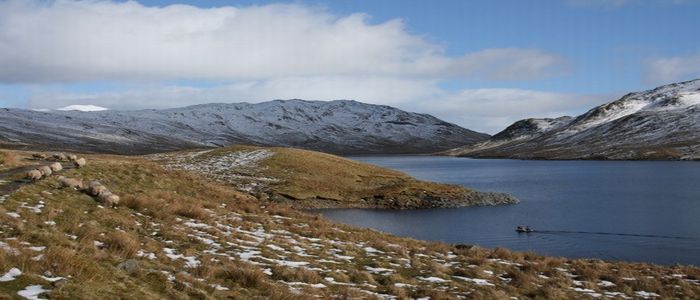At-risk species of freshwater fish reintroduced to Scotland’s lochs
Published: 18 June 2021
An at-risk species of fish has established itself in lochs across Scotland with the help of conservation managers and by rapidly adapting to its new environment, resulting in changes to their DNA, their ecology, and body shape, according to a new study.
An at-risk species of fish has established itself in lochs across Scotland with the help of conservation managers and by rapidly adapting to its new environment, resulting in changes to their DNA, their ecology, and body shape, according to a new study.

In an urgent bid to conserve the freshwater powan species of fish, scientists introduced eggs and fish to new loch sites across Scotland over the past 30 years, with the aim of establishing new and robust populations.
The research – led by a team at the University of Glasgow – shows that the translocated fish have indeed established in their new loch homes. The new powan populations have lower genetic diversity than the original source populations, but not worryingly low.
By using state-of-the-art genome analysis techniques, the study showed that the translocated populations are tapping into specific regions of the genome in adaptive evolutionary changes to the new populations.
The powan (Coregonus lavaretus, sometimes known as Coregonus clupeoides) is one of Scotland’s rarest fishes and found natively in only lochs Eck and Lomond. Powan is a species of high natural heritage value for Scotland, but is in worrying decline due to habitat destruction caused by climate change, increasing water temperatures and the of non-native ruffe fish in Loch Lomond, which voraciously feeds on powan eggs.
With the long-term health of the population depending on its genetic diversity and the evolutionary effect of translocation, the scientists wanted to find out how the populations changed, to look more closely at the species’ genetic health and determine if translocation was a successful strategy.
The study brought together a team of fish biologists, ecologists, and evolutionary geneticists at the Scottish Centre for Ecology and the Natural Environment (SCENE) and the Institute of Biodiversity, Animal Health and Comparative Medicine at the University of Glasgow; and the Limnological Institute at University of Konstanz in Germany and the UK Centre for Ecology and Hydrology.
Lead author Dr Marco Crotti, who recently completed his PhD on these fishes, noted: “We can see evidence of the translocation as changes in the powan genome and their ecology, but they are genetically healthy and are establishing.”
Co-author Prof Colin Adams, Director of SCENE at the University of Glasgow, said: “This study is important for biodiversity and conservation management: Actions to conserve fish populations need evidence of their success.
"This work shows that translocations were a successful way to help Scottish powan. The translocations worked as an emergency measure, but the best mitigation is preserving the original populations.”
Co-author Prof Kathryn Elmer said: “The translocation show how fast adaptation and evolution can occur in wild populations, even in just a few generations. This is natural selection in action - changes in DNA and genomes helping the fishes survive and establish in their new environment.”
The study is published in the scientific journal Evolutionary Applications.
Photograph: Loch Shira by Colin Adams
Enquiries: ali.howard@glasgow.ac.uk or elizabeth.mcmeekin@glasgow.ac.uk / 0141 330 6557 or 0141 330 4831
First published: 18 June 2021
<< June

